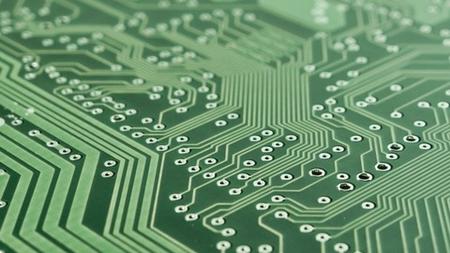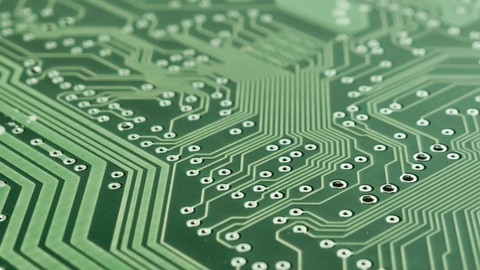Digital Logic Design: A Complete Guide
Published 5/2024
MP4 | Video: h264, 1920x1080 | Audio: AAC, 44.1 KHz
Language: English | Size: 2.18 GB | Duration: 6h 1m
Published 5/2024
MP4 | Video: h264, 1920x1080 | Audio: AAC, 44.1 KHz
Language: English | Size: 2.18 GB | Duration: 6h 1m
Number system, K-map, Boolean Algebra, Sequential Circuit, Basic Logic Family, Computational Circuits
What you'll learn
In a Digital Logic Design course, students will learn a wide range of concepts, techniques, and skills related to designing, analyzing, and implementing digital
Number Systems: Understanding binary, octal, and hexadecimal number systems and their applications in digital electronics.
Boolean Algebra: Mastering the fundamental laws and theorems of Boolean algebra, including Boolean expressions, truth tables, and logic minimization techniques.
Logic Gates: Exploring basic logic gates (AND, OR, NOT) and their properties, truth tables, logic symbols, and practical applications in digital circuits.
Combinational Logic Design: Designing and analyzing combinational logic circuits using various components such as multiplexers, demultiplexers, encoders, decode
Sequential Logic Design: Understanding sequential circuits, flip-flops, latches, registers, counters, and their applications in building memory elements, sequen
Digital Circuit Analysis: Analyzing the behavior of digital circuits using methods such as truth tables, Boolean algebra, Karnaugh maps, and timing diagrams.
Memory and Storage Elements: Exploring various types of memory devices such as RAM, ROM, and programmable logic devices (PLDs), and their role in digital system
Requirements
No, There are no pre requisites.
Description
Welcome to the world of Digital Logic Design, where the binary language of computers comes to life! In this comprehensive course, you'll dive deep into the foundational principles and techniques of designing digital circuits, laying the groundwork for understanding the inner workings of modern electronics.Whether you're a budding electrical engineer, computer scientist, or simply fascinated by the digital world around you, this course is your gateway to unlocking the mysteries of binary logic and digital systems. Through a blend of theoretical concepts and practical hands-on exercises, you'll develop the skills and knowledge necessary to design, analyze, and optimize digital circuits with confidence.Our aim is to provide you with a rich learning experience that not only equips you with theoretical knowledge but also empowers you to apply these concepts in real-world scenarios. Whether you're pursuing a career in electronics, computer engineering, or simply have a passion for understanding how digital systems work, this course will lay a solid foundation for your journey.Get ready to unlock the mysteries of digital logic design and embark on a rewarding learning adventure. Let's dive in and explore the fascinating world of digital circuits together!"Explore more , All the best my dear learners
Overview
Section 1: Basic and Logic family
Lecture 1 Number System Representation
Lecture 2 Boolean Algebra
Lecture 3 Problem Solved 1: Boolean algebra
Lecture 4 Problem solved 2: Boolean algebra
Lecture 5 Sum of Product (SOP) and Product of Sum (POS)
Lecture 6 Problem solved: SOP
Lecture 7 Min Terms and Max Terms
Lecture 8 Introduction and rules of K-Map
Lecture 9 2 and 3 Variable K-Map
Lecture 10 4 variable K-map
Lecture 11 Problem Solved 1: K-Map
Lecture 12 Problem Solved 2: K-Map
Lecture 13 Introduction to Logic family
Lecture 14 Standard TTL
Lecture 15 TTL: Totem Pole Output
Lecture 16 TTL: Open collector Output
Section 2: Computational Circuits
Lecture 17 Half Adder
Lecture 18 Half Subtractor
Lecture 19 Full adder
Lecture 20 Full Subtractor
Lecture 21 Multiplexer
Lecture 22 Demultiplexer
Lecture 23 encoder
Lecture 24 Decoder
Lecture 25 Code Converters
Lecture 26 Code converter: Part 2
Lecture 27 Binary to Grey Code
Lecture 28 Magnitude Comparator
Section 3: Sequential circuits
Lecture 29 Flip flop conversion: SR to JK slip flop
Lecture 30 JK to T flip flop conversion
Lecture 31 3 bit synchronous up counter using T flip flop
Lecture 32 3 bit synchronous down counter using Flip flop
Section 4: Advanced Combinational and Sequential Logic
Lecture 33 Mealy and Moore Introduction
Lecture 34 Mealy Type
Lecture 35 Non-Overlapping Mealy Type
Lecture 36 Sequence detector using moore type
Lecture 37 Sequence detector using flip flop
Lecture 38 Hamming code Introduction
Lecture 39 Generation of hamming code
Lecture 40 Error correction and detection hamming code
Lecture 41 2 bit multiplier
Section 5: PLD's and Memory
Lecture 42 Memory Unit
Lecture 43 Static Random Access Memory (RAM)
Lecture 44 Dynamic RAM
Lecture 45 Difference between Static and Dynamic RAM
Lecture 46 ROM and its types
Lecture 47 PLD and its types
Lecture 48 Problem solved: PAL
Lecture 49 Problem solved PLA
Lecture 50 Problem solved: PROM
Beginner Electronics, CS and IT Aspirants



